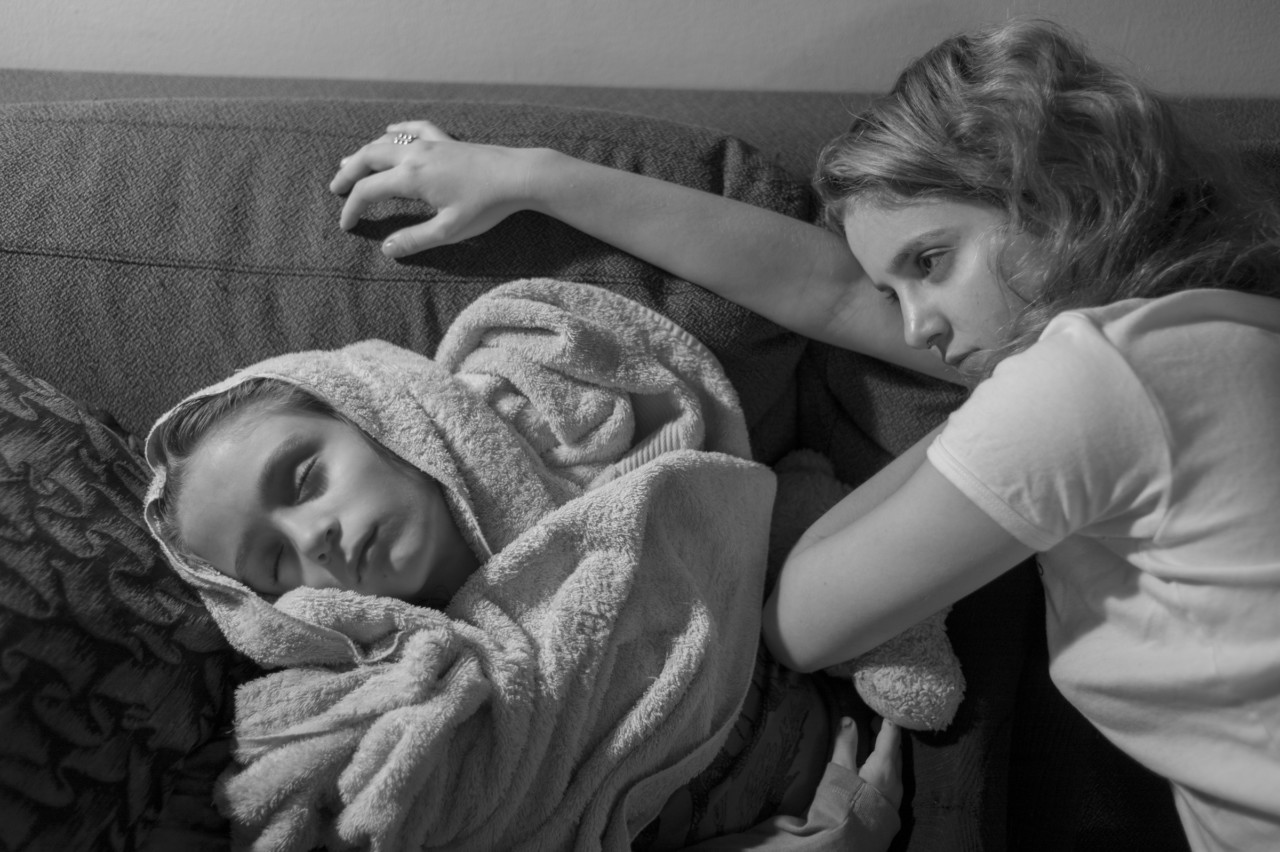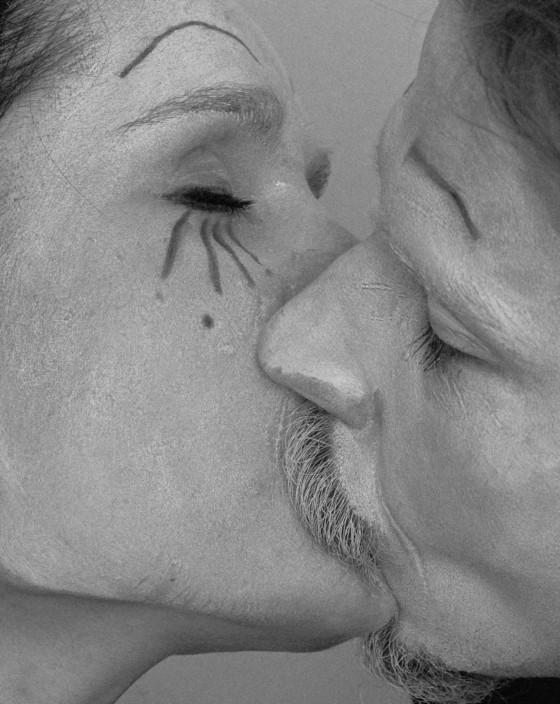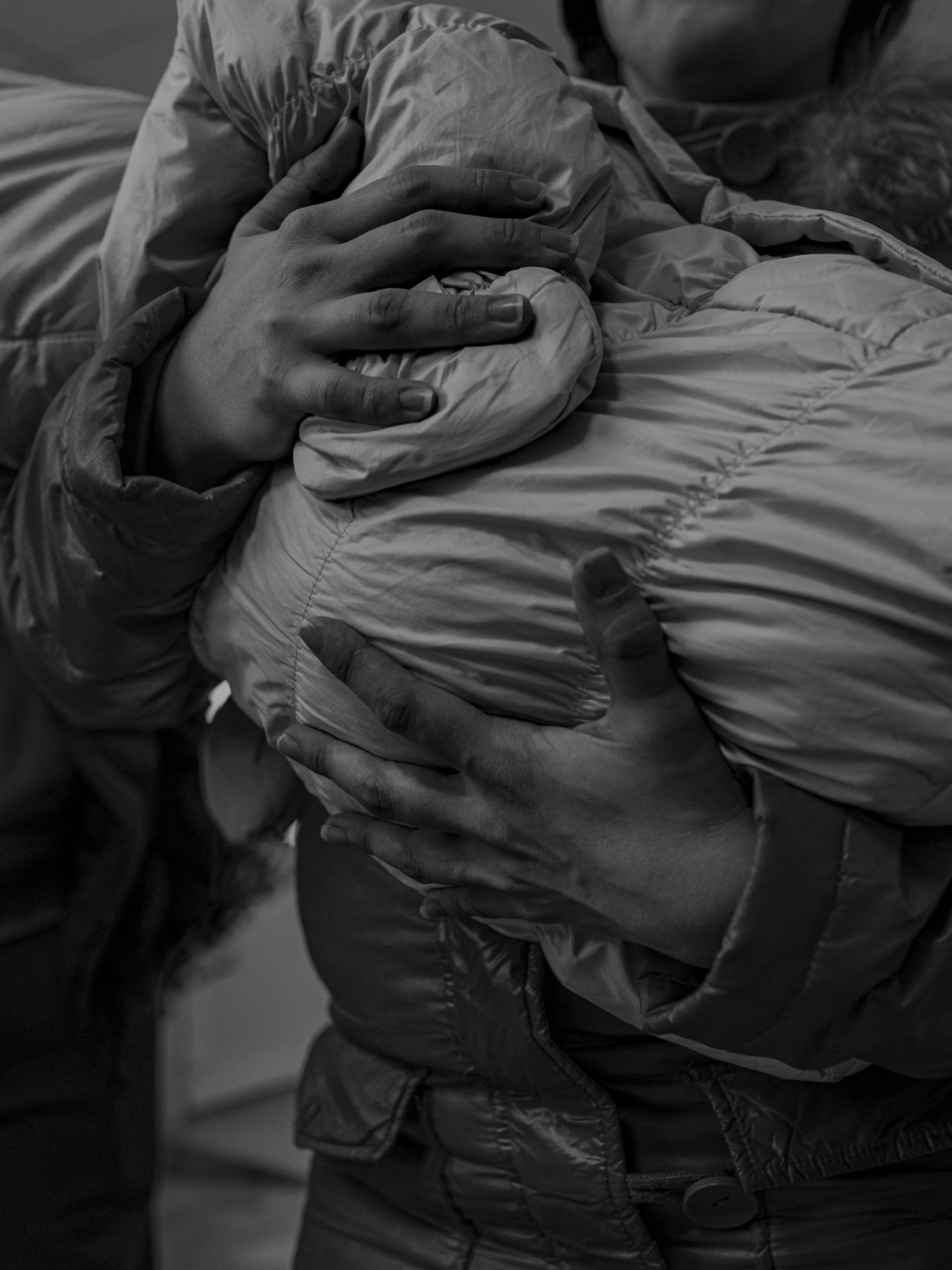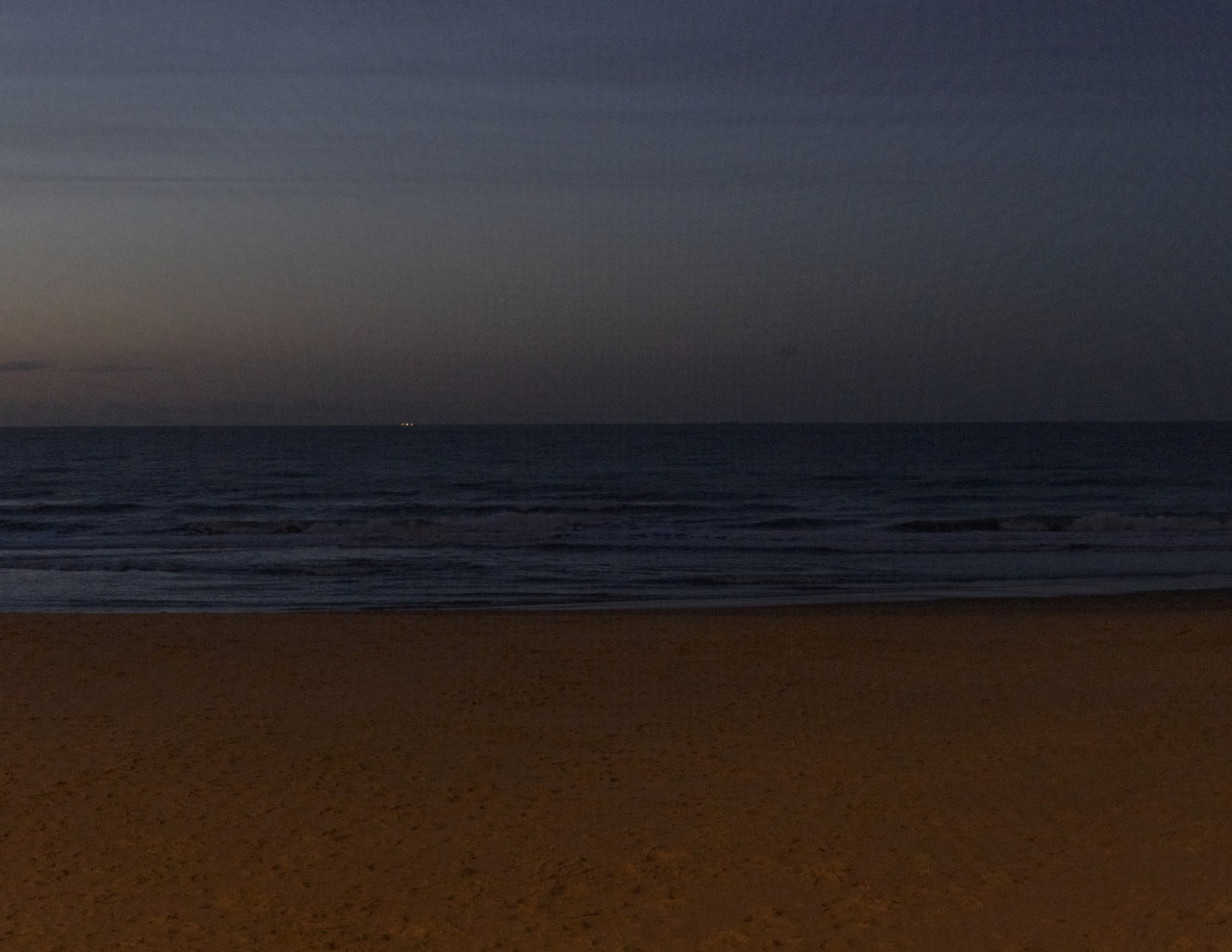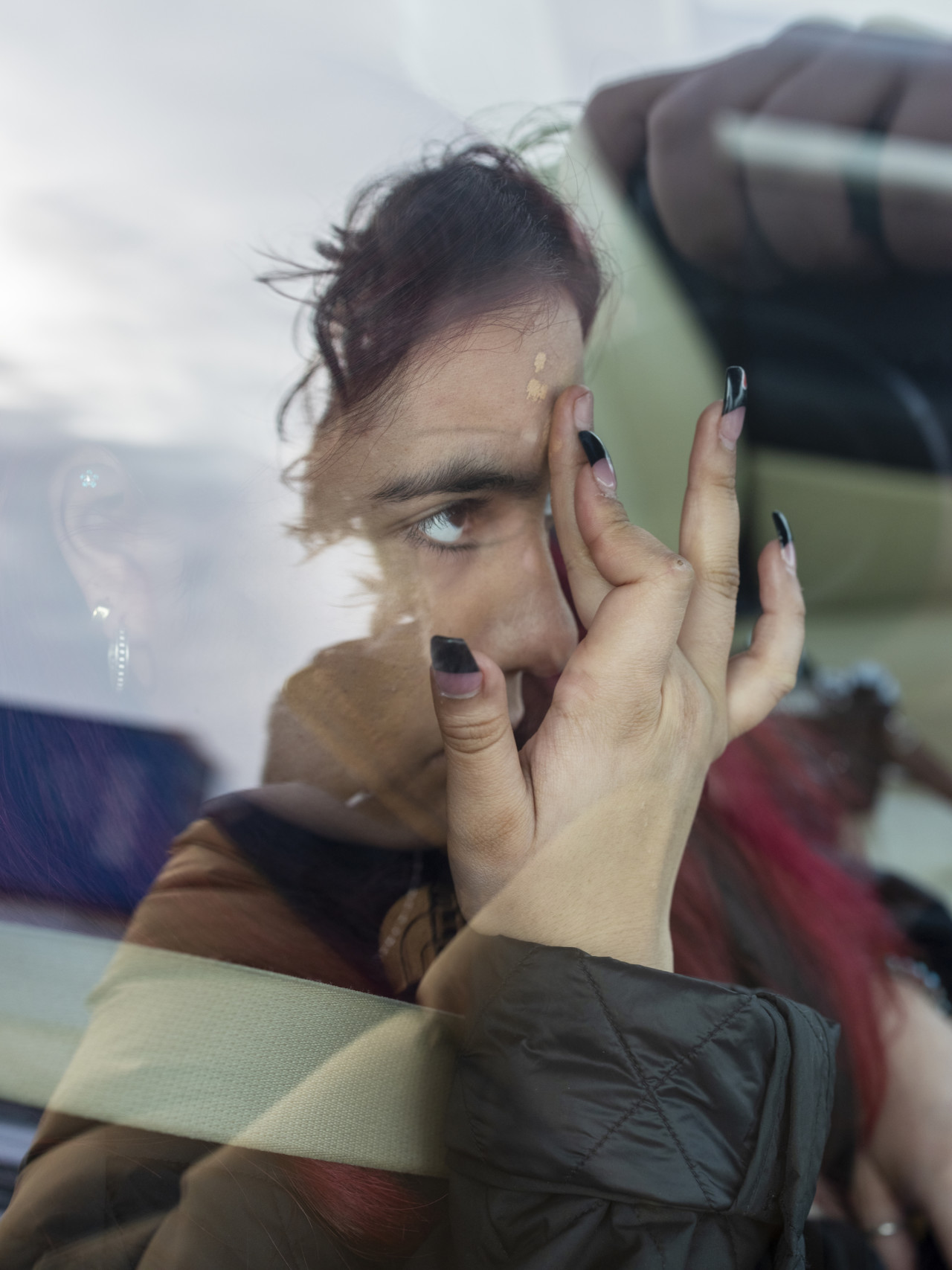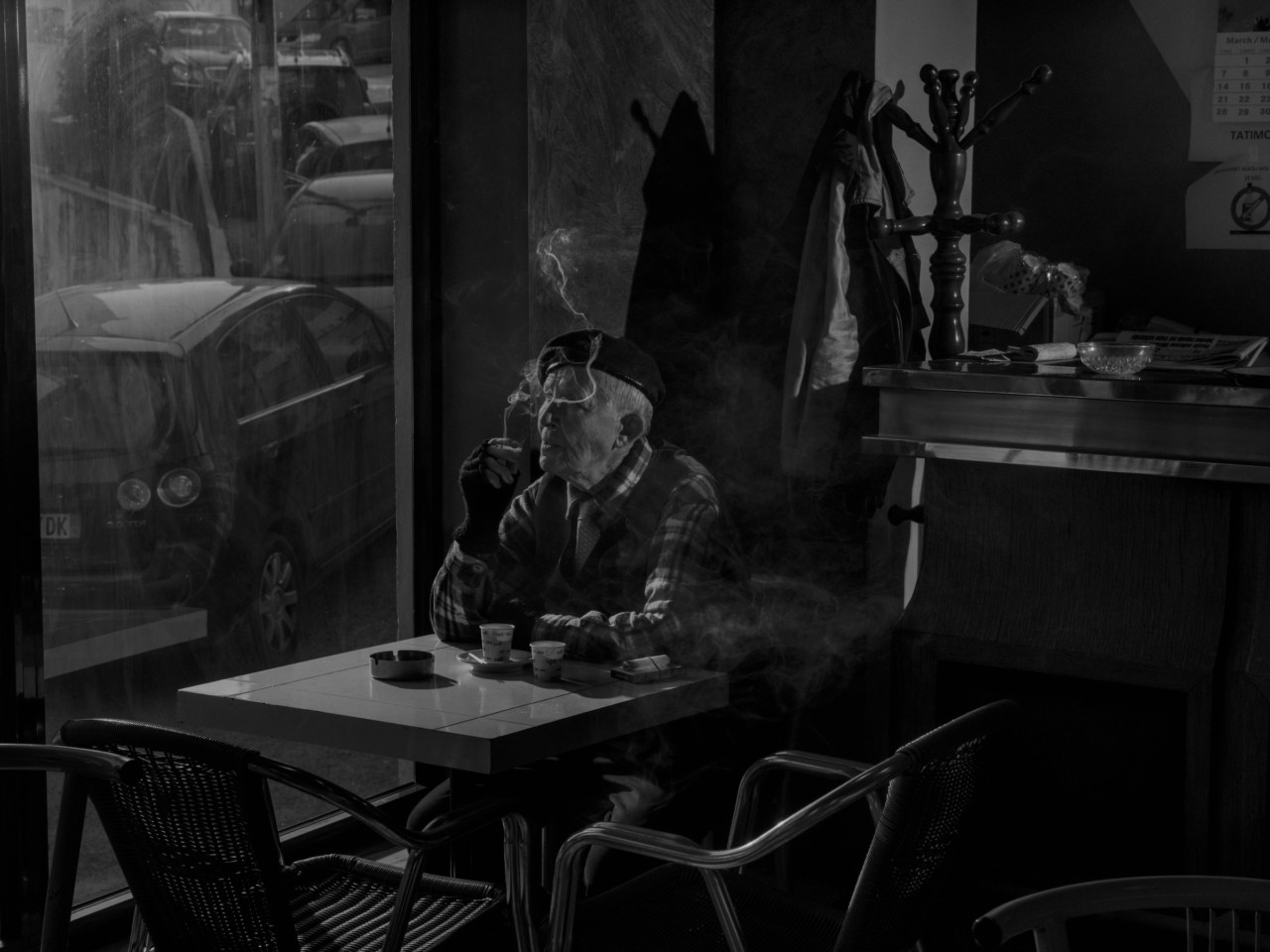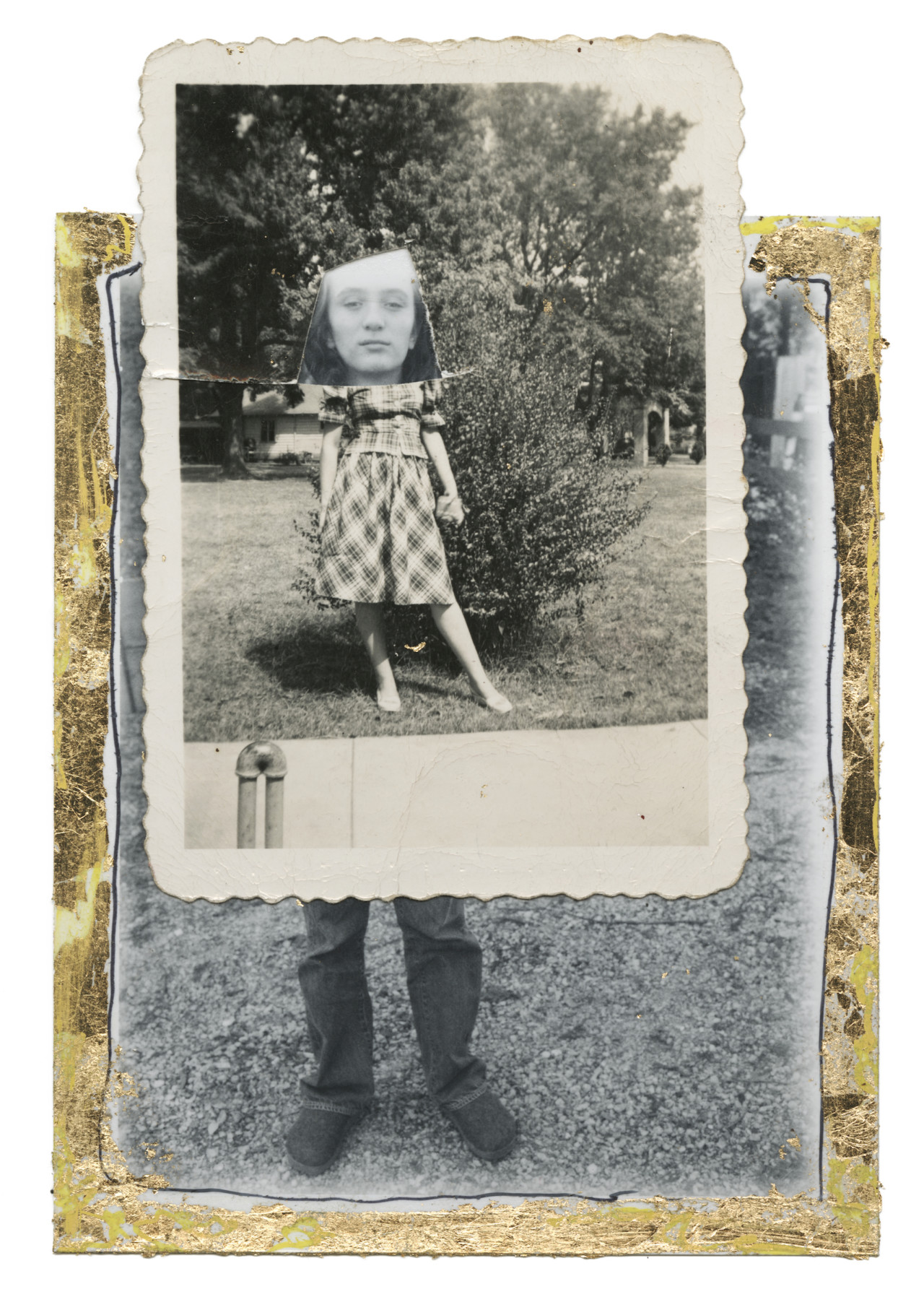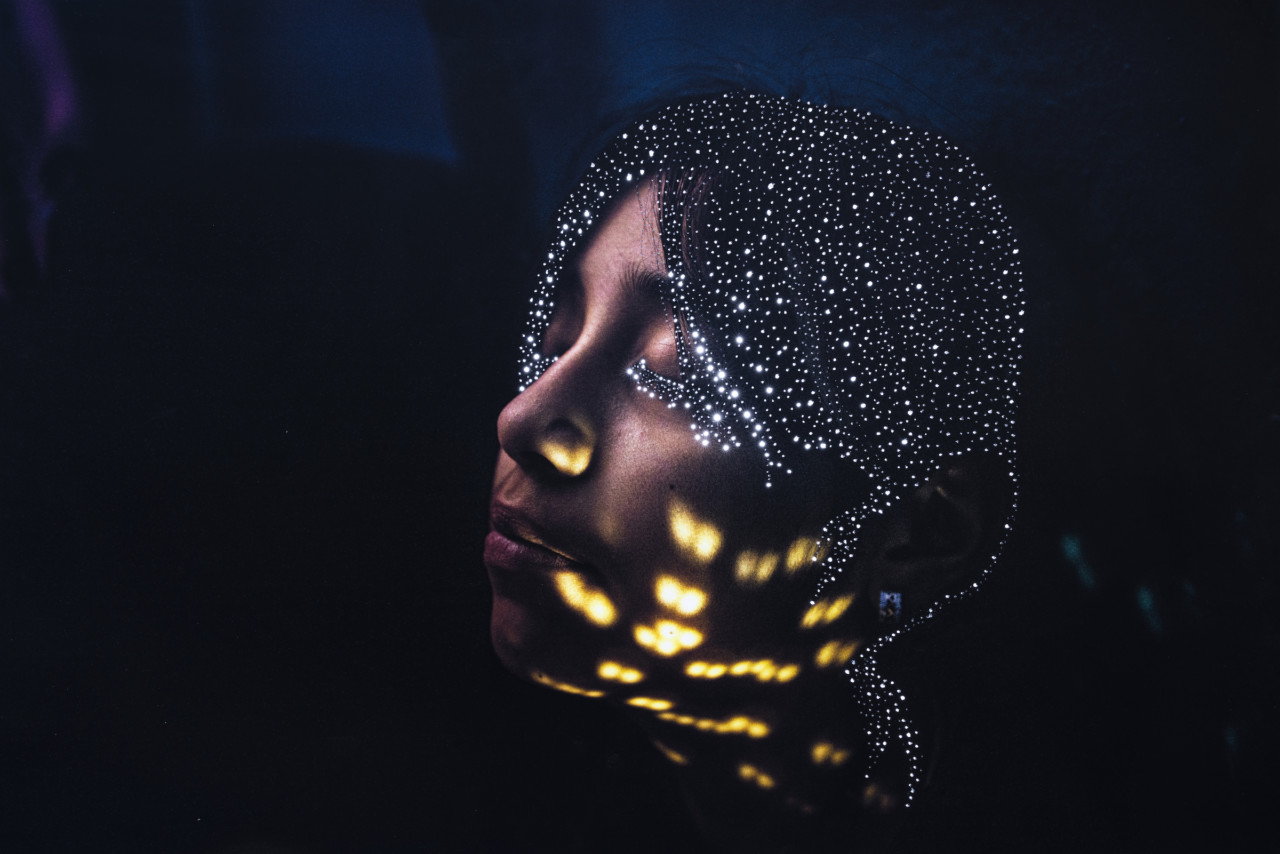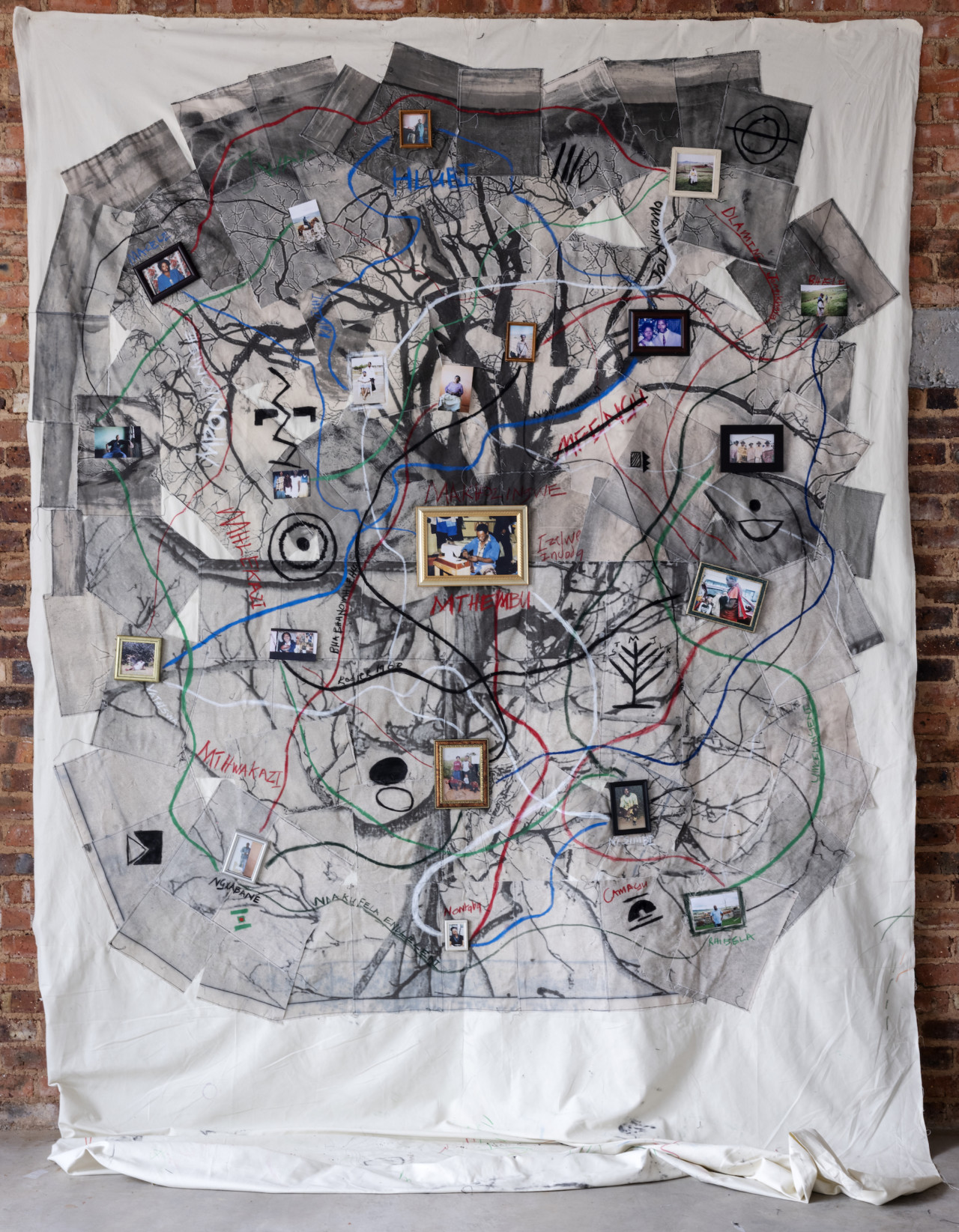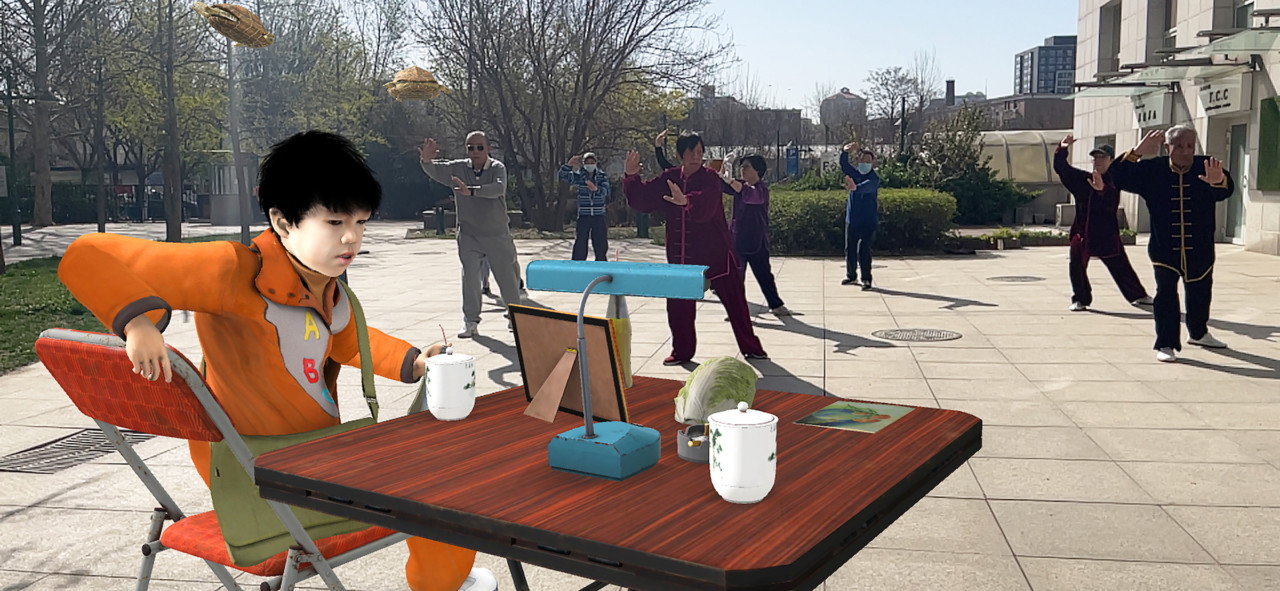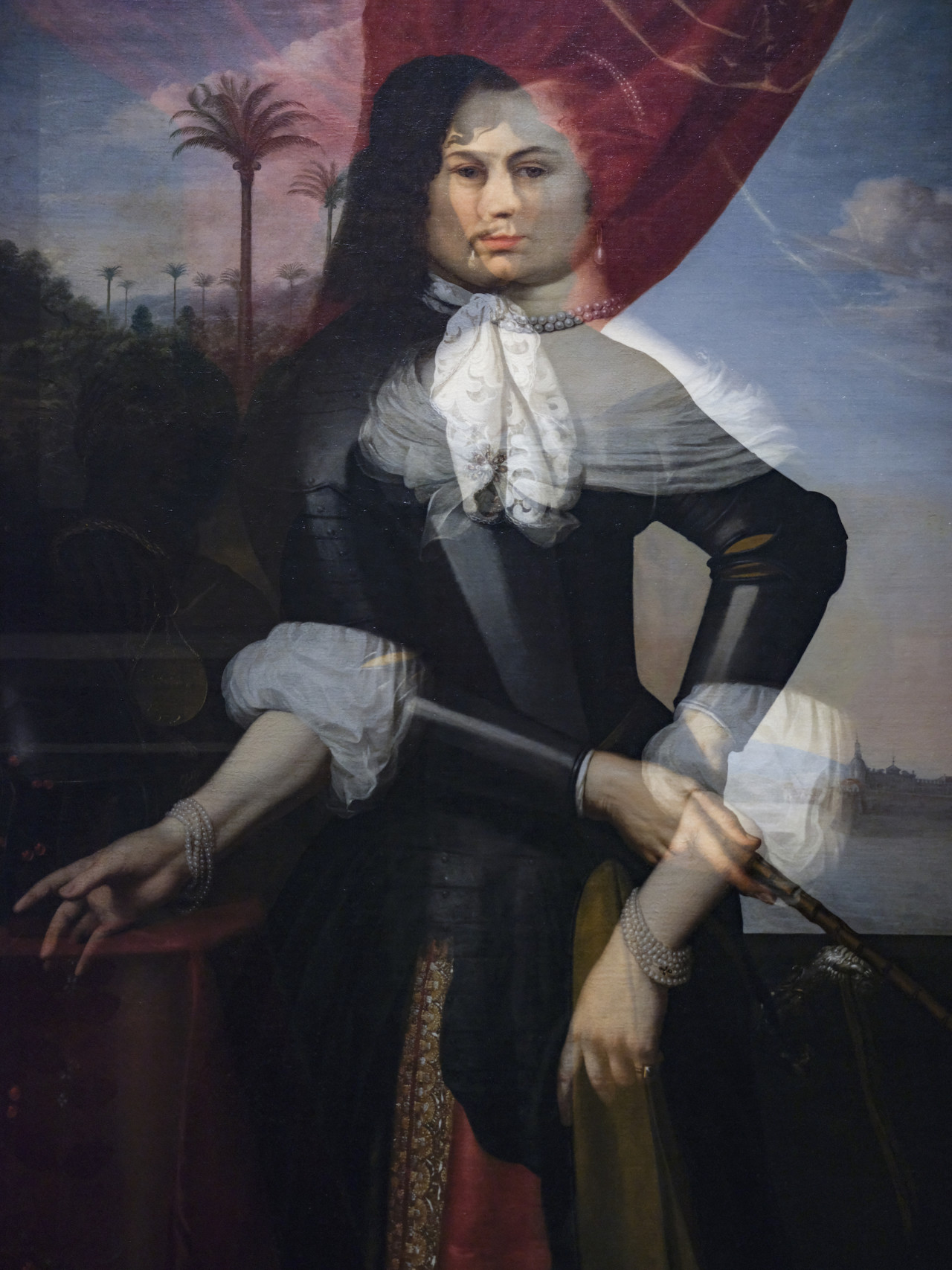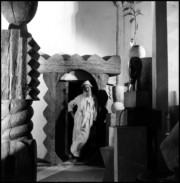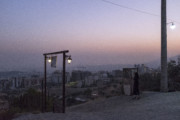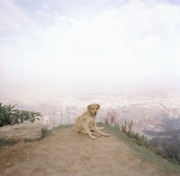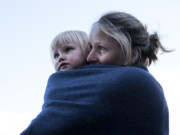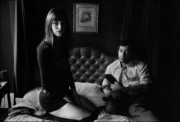We Are Family
Colin Pantall talks to Jonathan Ferrari from AMI about the Paris-based fashion brand's extraordinary collaboration with Magnum. He also speaks with some of the photographers and artists who made work for the group project, discussing the ideas behind their interpretation of the theme of family.
R.D. Laing wrote that the family may be imagined as a web, a flower, a tomb, a prison, a castle… He thought of the family as a site of multiple possibilities, as something that goes beyond the image we have of the idealized family. It can be a network of hidden secrets and denied dreams, a dysfunctional site of addiction, neglect and control (as was the case with the famed psychiatrist’s own family), or it can be a place where you go for comfort and love.
The idea that the family is not only one thing is at the heart of an ambitious traveling photographic exhibition that resulted from an inspired collaboration between Magnum Photos and AMI, the Parisian fashion brand founded in 2011 by its Creative Director, Alexandre Mattiussi.
Titled FAMILY, the project will also be published as a luxurious photobook published by Flammarion complete with fold-outs, lay-flat binding and essays by renowned French-Moroccan author Leïla Slimani and Magnum photographer Olivia Arthur. It debuts at the launch exhibition at Espace Commines in Paris (September 30 to October 2), and in the coming months, the show will travel on to three further cities: Miami, during December to coincide with Art Basel, and then on to Shanghai and Kyoto in 2023.
The project was initiated by AMI’s Art Director, Jonathan Ferrari. “We were coming out of this period of Covid and the world wasn’t going very well,” he explains. “I directed myself towards the idea of the family. It’s a feeling that we need to have back. Family is simple, family is emotional. The idea of comfort and going back to your roots and finding a connection with those around you is important.
“I began talking with Nikandre [Koukoulioti, Magnum’s Paris-based Advertising & Fashion Development Manager], and we looked at the photographers that Magnum represents. She showed me some of their books, and 30 minutes later, we had the project.”
Thirteen Magnum photographers were commissioned to make work for the project, alongside two guest artists, and when seen together in the book and traveling exhibition, they demonstrate the multiple ways in which family can be understood and represented.
There are works that show family dynamics in the face of conflict and fear, works that look at the representation of family in art, and work such as that of Nanna Heitmann that combines fiction, photography and performance. Some are concrete representations, like Hiroji Kubota’s contact sheets that he links to the family of Magnum photographers he is a part of, while some are more conceptual, and some are more abstract, or darker.
"I don’t often photograph the people who are truly close to me. I feel ashamed to take my camera out around them."
-
Antoine d’Agata’s project is one such, showing the hands and torsos of people in Ukraine. They hold each other, they grasp, they reach into the air, they are claw-like. Accompanying them are rawly expressed texts by his daughter that tell of an absent father, of a hidden path, of a concealed darkness.
Bieke Depoorter’s work is more abstract. For FAMILY, she made “…mostly images I would not show or even look at again,” as she writes in the book.
“Bieke gave us these images of the sea which seemingly don’t have any connection with family,” comments Ferrari. “But the story is amazing because at the same time her brothers and sisters are having children, she is photographing the sea. And that picture of the sea symbolizes the idea of family for her. It’s fantastic.”
Accompanying the images are short texts. “I don’t often photograph the people who are truly close to me,” writes Depoorter. “I feel ashamed to take my camera out around them. I think I am afraid of killing the moment.” Separated by distance, if not time itself, the seascapes are a gift to her new family, separated by distance but not by time. They are also her attempt to resolve that conundrum she feels as a photographer, recording similar reservations about photographing her partner.
“I know I am in love with him because every time I look at him, I feel the urge to photograph him,” she writes. “But I don’t dare ask to make his picture. I don’t even dare to take my camera out. Photographing this moment might change it, and I don’t want that to happen.”
Love is a major theme in the work of Alessandra Sanguinetti and Jim Goldberg, two members of Magnum’s extended family who met through the agency and eventually became a couple. Here they show the new ties created between their respective daughters in their blended family.
Meanwhile, Alec Soth travels with his daughter Carmen, the process of making the work in the project embedding the bond between them. The role gender identity plays in family life is shown in the work of Alex Majoli. The images are accompanied by stories that detail some of the intricacies of gender identity in Albanian society. Diana, from the small mountain town of Tropojë is an example:
“This is also the town where, as a little girl, he spent the first nine years of his life wearing trousers, playing football and getting into fights. At the age of 17, Diana decided to become a burrnesha. He took an oath of celibacy in front of dozens of relatives and vowed to serve the family as a man… He retired after a career as a customs officer at the port of Durrës. Now, he spends his time painting, taking photographs and cycling around the city.”
The diversity of family life and custom was also a priority for AMI. “Sabiha Çimen is from Turkey, and it was interesting to have an overview of different people from different countries and different religions so you can see different ideas of family from different cultures,” says Ferrari.
There are beautiful works by Mexican photographer Yael Martínez who uses pinpricks of light to illuminate his family subject in a manner that is akin to photographic magic realism, while South African photographer Lindokuhle Sobekwa records his family clan name, Umthimkhulu (which translates as ‘big tree’) through a mixed-media collage featuring a drawing of a tree, sewn cotton panels and a selection of family photographs.
“The achievement of this exhibition is to have something interesting to say, to use the brand as a vessel to bring a positive philosophy that makes people think,” says Ferrari. “This project helps show that we stand for and believe in the importance of human rights. We work to support the LGBTQ+ community, and it’s not pinkwashing. We know the importance of using our privileges and position to promote progressive ideas.“
To extend the dialogue with diversity and the global reach of the project, two Asian guest artists were commissioned. Cao Fei, from China, created a digital avatar of her son. “Li Nova exists only in virtual and augmented reality, accompanied by a set of Chinese red folding dining tables and chairs from the 1980s and three turtles hovering around his head,” she writes in the book. “When I was a child, most people lived in dormitories assigned by the state. Whole families would eat around similar tables in tiny dining rooms. Many family members lived together at that time. I remember the hunger, the lack of meat, and the cold.”
Meanwhile, Young-Joo Lee, originally from South Korea, created an animation of an apartment building inhabited by a range of imagined families.
“When I think about family I think about the place the family lives,” says Lee from her home in the United States. “I was born in Seoul, but when I was six my family moved to the 19th floor of an apartment building in a suburban area. There were so many things happening, there were so many sounds around you, but you never really got to know exactly what was going on. I remember hearing people fight and you could also hear the sound of people running on the floor above.”
These “social memories”, as she calls them, are built into the animation of the apartment block she made for the exhibition. You see seven floors of the building in a dim charcoal cross-section, each consisting of two apartments. People dance, they cook, they keep birds, they make love. Move up to the top floors and the apartments become inhabited by parrots, snails and chimpanzees. You hear people gossiping, plates clinking, steps running. The soul of Apartment 22 is a multiplicity of families.
"When I realized that a mother could set fire to her own house, it made me question the function of family, the idea of it as being like a nest, as something protective."
-
“There are a few episodes from my childhood that contributed to the final animation. Opposite our building, on the first floor, there were family friends with three daughters. One day the parents had a fight and the mother set the apartment on fire. It scorched the building up to the seventh floor. It was a traumatic moment for me.
“When I realized that a mother could set fire to her own house, it made me question the function of family, the idea of it as being like a nest, as something protective.”
Cristina de Middel works with the idea of memory in artworks. In Endogamia, she seeks to disrupt the function of the portrait as a representation of status and power to get to the more interesting narratives that lie beneath the surface.
“I don’t have children. I’m part of my mother’s family,” she tells me from her home in Salvador, Brazil. “So when they asked me to talk about family, I thought, ‘Oh, I’ll have to talk about my mother’s family. I’ll have to talk about motherhood, feelings, things I have learned about my family.”
That prospect didn’t excite her very much. “So, I decided to project a more intellectual and unemotional idea of family, and I remembered this project, showed it to the curator and he said, ‘Oh, this is perfect.’ It started in 2018 at the Prado Gallery in Spain. They commissioned 12 Spanish photographers and I was one of them. We were given access to the museum and you could do whatever you wanted. I was very attracted to the portrait rooms.”
"The result was a kind of monster with 15 eyes and 15 mouths, but you could actually recognize the traits and the characteristics of the family."
-
These rooms contained paintings of the kings and queens, the popes and cardinals of Europe by Goya, Velasquez and Raphael. They are paintings that project authority and power, paintings of people who would do everything they could to hold on to that power.
“The reasons these portraits were made were the same as why photographs are made, to keep a record of what somebody looked like. What I decided was to play with the camera and make multiple exposures. So in the room with the Austrian royal family, I would take 15 pictures superimposed on each other, all made in-camera. The result was a kind of monster with 15 eyes and 15 mouths, but you could actually recognize the traits and the characteristics of the family.
“I did that and showed it to the Prado. They didn’t like it very much. It was called Endogamia (a term given to the practice of marrying within your clan or class or specific social group) because the royal families of Europe have been marrying into each other to keep power. I think the title and the sensitivity of the royal family in Spain made the pictures unusable.”
Endogamia is a conceptual work that links both to art history and to the 19th century physiognomic and composite works of Cesare Lombroso and Francis Galton. Lombroso initiated now discredited theories for identifying criminality in a person from their facial characteristics. Galton took these ideas down an even darker path by making composite images of different types of criminal and developing the despicable pseudo-science of eugenics. In Endogamia, de Middel seeks to examine and disrupt these ideas and the assumptions that accompanied them.
“I started with the royal family, then I continued with paintings of people in the same room. Sometimes it would be sisters and brothers, sometimes it would be people and their servants, or their lovers. Then it became about more than family. Sometimes it would be about gender, about clothing. I made a collection for AMI, but I will continue working with it. It’s a project where the conceptual part can go many ways. Now I’m open to everything.
Perhaps the most loving idea of family in the project comes from Bruce Gilden, a photographer who, together with his wife Sophie, found a sense of family and belonging in the black biker clubs of New York City.
“One day my wife and I were arguing as usual,” says Gilden from his home outside New York. “It was 2020 and we were looking for this Black Lives Matter protest. We get to Barclays Center [home to the Brooklyn Nets basketball team], and I hear motorcycles blasting. It’s filled with motorcycles with mostly black motorcyclists, so I went in and I started taking pictures. That’s how it started.”
He explains that to take these kinds of pictures, you first need an introduction. “A friend of Sophie’s, who’s an ex-fireman, introduced me to the [club’s] President, and the President says, ‘OK you can photograph. You have to go through the test that they trust you.’
“It’s funny because some people will never trust you, and some people don’t trust you but then they trust you because they get to like you and they see you’re serious. I got trusted because they knew me. I spent my time with them and they know I care for them. So when AMI said they’re going to do family, I thought, ‘Wow, they really are my family!’
"I’m not close to many people. But I’m as close to the bikers as you can be without being a biker. They are a family."
-
“My father was one of seven children. He was a racketeer type, and a lot of his values rubbed off on me. So when [I’d] go to the family, everyone was fighting and they didn’t talk. But with the biker clubs, you say hello to everyone, you ask how they are doing. No matter how bad my day is, I have a good time. My immediate family is my wife, my daughter and the three cats. I’m not close to many people. But I’m as close to the bikers as you can be without being a biker. They are a family.”
Gilden’s images are tight-cropped and show club members attending meetings. One shows a club president staring directly at Gilden as he is frisked upon entry to a club night, a badge on his biker’s vest stating, ‘President’. Another shows club members posing for a group photo beneath the low ceiling.
“This picture is where the guys made their own group picture. They set themselves up. You have to be wise enough to allow people to do their thing when they can do it better than you can do it. You have to be able to recognize situations. I couldn’t do better than that if I asked a thousand groups to pose.”
“I have to say this is the first time in my life when I kept up with the people I photograph and I go to things that won’t be good to photograph to show my respect, or show that my wife and I care. It’s not like a photo project. I tell my friends there that as long as I’m healthy, I’m coming to be with you guys because we have fun. You leave your troubles at the door and I enjoy seeing them. I met so many nice, really kind people. You’re born into a family, but you come into this one by choice, on both sides.”
Pick up your copy of the photobook here.


